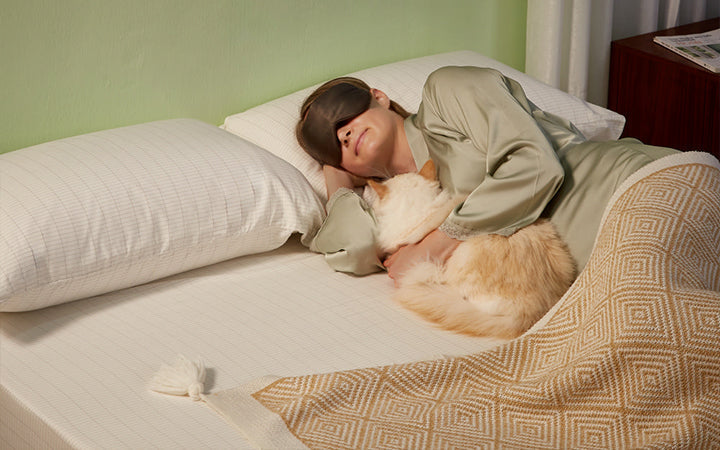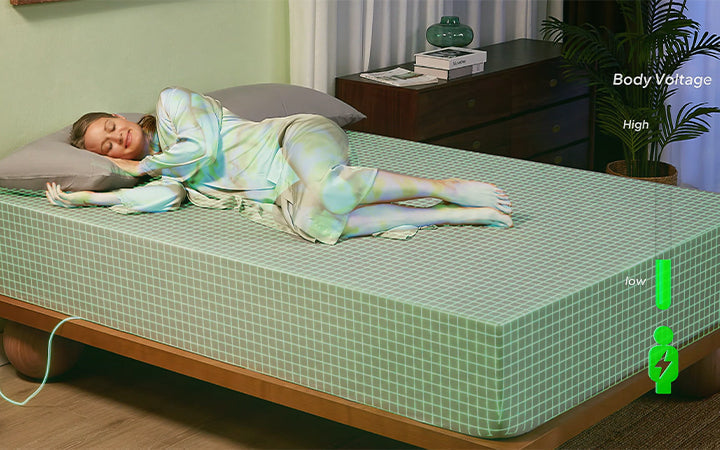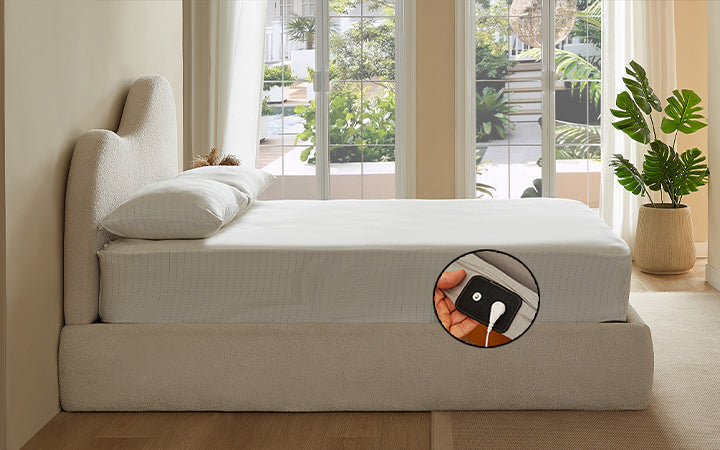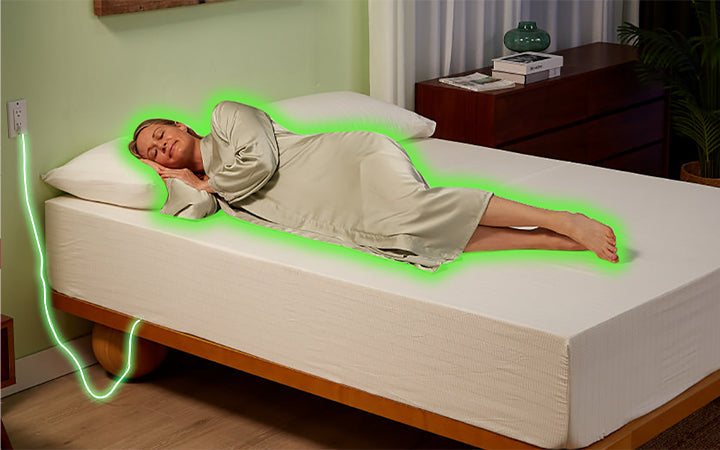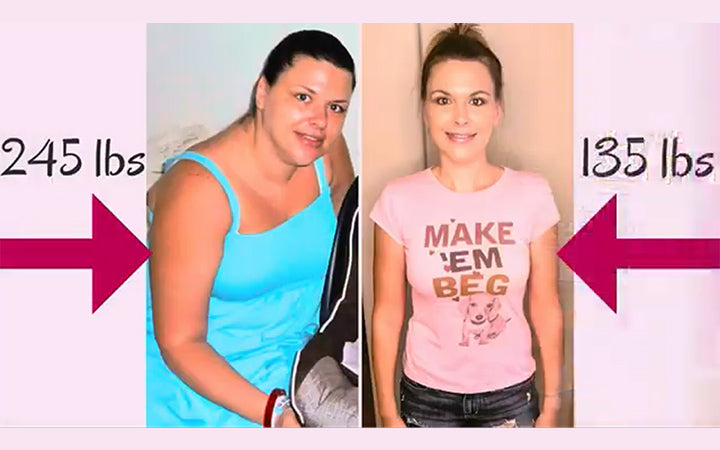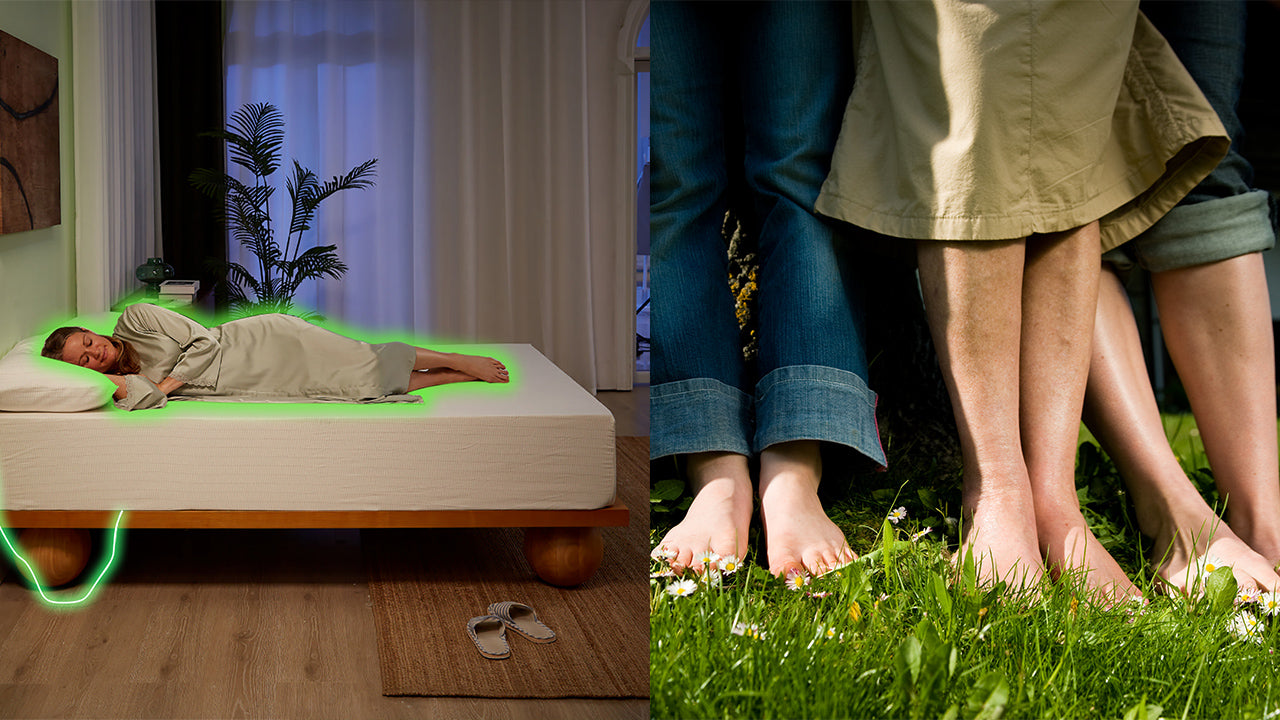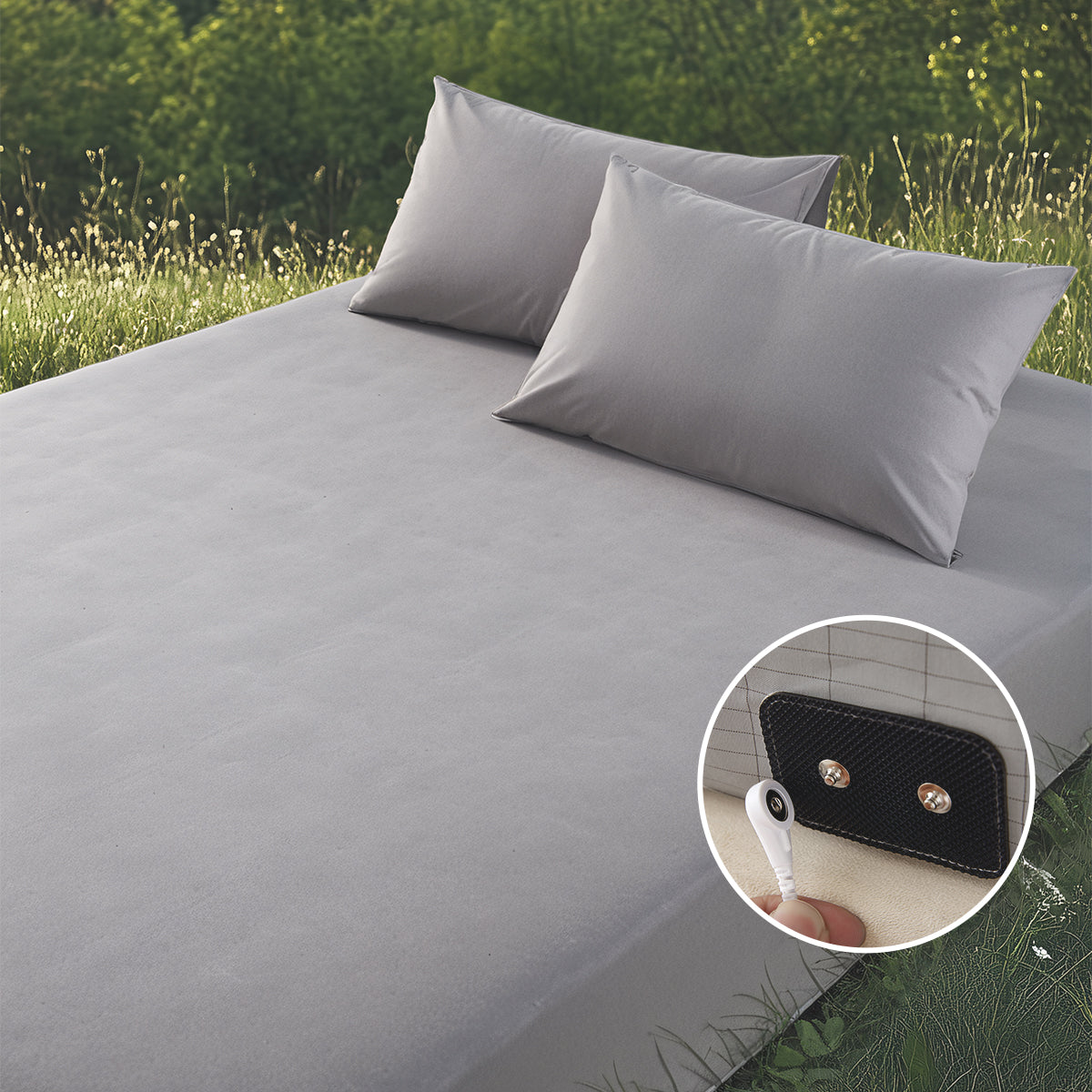Can Grounding Sheets be Used in Conjunction With Other Sleep Aids
The search for better sleep can involve trying various supportive measures. If a grounding sheet is already in your toolkit, or you're looking into its benefits, a practical question is how it combines with other sleep aids you might be using.
These conductive sheets, designed to connect the body to the Earth's natural energy, share a common purpose with many sleep remedies: to help you rest better. Grounding sheets are generally compatible and safe to use with most other sleep aids. However, knowing how they might interact, especially with electrical items in your bedroom, is key to using them wisely.
How Grounding Sheets May Help You Sleep
The scientific principle behind grounding sheets is that they connect your body to the Earth's subtle electrical potential. This connection is believed to foster physiological changes within the body that may, in turn, contribute to improved sleep.
Proponents suggest that grounding may help:
- Reduce inflammation: Chronic inflammation can cause pain and restlessness, making sleep difficult. Grounding might ease these discomforts by potentially lowering this inflammation.
- Normalize cortisol rhythms: Cortisol, the body's primary stress hormone, naturally peaks in the morning and declines at night. Disrupted cortisol rhythms can interfere with sleep. Grounding is theorized to help regulate this cycle.
- Calm the Autonomic Nervous System: Grounding may encourage a shift from the body's "fight or flight" (sympathetic) state to the "rest and digest" (parasympathetic) state, which promotes relaxation.
- Lessen the impact of ambient electromagnetic fields (EMFs): Some believe these sheets, by providing a path to ground, can reduce the body's interaction with certain man-made EMFs in the surroundings.
While research is ongoing, many individuals report experiencing deeper, more restful sleep and waking up feeling more refreshed when using grounding sheets.

How Grounding Sheets Work with Other Sleep Aids
Sleep is a complex process, and what works can vary greatly from person to person. Let's look at common categories of sleep aids and how grounding sheets might fit with them.
Behavioral and Lifestyle Adjustments (Sleep Hygiene)
Sleep hygiene refers to habits and environmental factors that promote better sleep. This includes maintaining a consistent sleep schedule, ensuring your bedroom is dark, cool, and quiet, avoiding stimulants like caffeine or alcohol close to bedtime, and engaging in relaxing pre-sleep routines such as reading or gentle stretching.
Interaction with Grounding Sheets: These practices are highly compatible with grounding sheets. In fact, incorporating a grounding sheet can be seen as another positive step in a comprehensive sleep hygiene strategy. There are no known negative interactions; grounding simply adds another layer of potential support for your body's natural sleep processes.
Cognitive Behavioral Therapy for Insomnia (CBT-I)
CBT-I is a well-established, structured therapeutic program aimed at identifying and changing thoughts and behaviors that hinder sleep. It often involves techniques like sleep restriction, stimulus control, and cognitive restructuring.
Interaction with Grounding Sheets: Using grounding fitted sheets is compatible with undergoing CBT-I. Grounding addresses potential physiological factors related to sleep, while CBT-I focuses on the cognitive and behavioral aspects. They operate on different levels and do not conflict with each other.

Dietary Supplements and Herbal Remedies
Many people turn to supplements like melatonin (a hormone that regulates sleep-wake cycles), magnesium (a mineral involved in relaxation), or herbal remedies such as valerian root, chamomile, or L-theanine to support sleep.
Interaction with Grounding Sheets: These are generally compatible. There are no known direct pharmacological or physiological reasons why grounding sheets would negatively interact with common sleep supplements. Both approaches aim to support the body’s natural sleep mechanisms but through different pathways.
A Note of Caution: If you find that grounding significantly improves your sleep, it’s a good idea to discuss this with your healthcare provider. Over time, they might suggest that dosages of certain supplements, particularly melatonin, could be adjusted, but this should always be done under professional guidance.

Prescription and Over-the-Counter (OTC) Sleep Medications
This category includes prescription medications like benzodiazepines or Z-drugs, as well as OTC options such as antihistamines (like diphenhydramine) often used for their sedative effects.
Interaction with Grounding Sheets: From a direct interaction perspective, grounding sheets are generally considered compatible. The act of grounding is not known to interfere with how these drugs are metabolized or how they work in the body.
Important Consideration: It is always crucial to consult your doctor before adding any new sleep aid, including a grounding sheet, if you are taking prescription medications for sleep or any other condition. While speculative, if grounding contributes to improved sleep quality over time, it might, for some individuals, support a doctor-guided effort to reduce reliance on sleep medications. However, this must be managed strictly under medical supervision and should not be attempted independently.
5 Environmental Sleep Aids
These are tools or environmental modifications used to create a more sleep-conducive atmosphere.
1.White Noise Machines/Sound Conditioners:
These devices produce consistent, soothing sounds to mask disruptive noises.
Interaction: Compatible. Grounding works on an electrical level, while sound machines work on the auditory system.

2.Blackout Curtains/Sleep Masks:
These block out light, which can interfere with melatonin production.
Interaction: Compatible. These address light exposure, which is separate from the electrical mechanism of grounding.

3.Temperature Regulation (Fans, Air Conditioning, Special Bedding):
Maintaining a comfortable room temperature is key for good sleep.
Interaction: Compatible. Thermal comfort and electrical grounding do not conflict.
4.Weighted Blankets:
These provide deep pressure stimulation, which can be calming and promote relaxation.
Interaction: Compatible. A weighted blanket can typically be used either over or under a grounding sheet. For optimal grounding, direct skin contact with the grounding sheet is preferred, so you might place the grounding sheet directly on the mattress, under your regular fitted sheet (if it's a thin, natural fiber like cotton), or use it as a top sheet with the weighted blanket on top of that.
5.Humidifiers/Dehumidifiers/Air Purifiers:
These devices modify air quality, humidity, or airborne particles.
Interaction: Compatible. These do not directly interfere with the electrical function of a grounding sheet.
Aromatherapy
Interaction with Grounding Sheets: Compatible. Aromatherapy works through the olfactory system and its potential effects on the brain's limbic system; this does not interfere with grounding.
Electric Blankets and Heating Pads
This is one area where caution is warranted.
- Mechanism: Electric blankets and heating pads generate their own electromagnetic fields (EMFs) to produce heat.
- Potential Interaction: Using an electric blanket or heating pad directly over or under and in simultaneous operation with a grounding sheet might be counterproductive or lead to unintended interactions. The grounding sheet is designed to connect you to the Earth's field, and introducing a strong, close-proximity electrical field from another device could interfere with this process. Some theories suggest the grounding sheet might even attract or concentrate the EMFs from the electric blanket.
- Recommendation: It's generally advised not to use electric blankets or heating pads in direct contact with and at the same time as a grounding sheet. A safer approach might be to use the electric blanket to warm the bed, then turn it off and remove it (or ensure it's off) before getting into bed with the grounding sheet.
Layering electrical devices in your sleep environment always requires careful consideration for safety.
5 Important Points When Combining Grounding Sheets and Other Sleep Aids
When you start combining different approaches to improve sleep, a few sensible steps can help you do so safely and effectively.
- Know How Each Aid Works: Having a basic idea of the intended mechanism of each sleep aid you use helps in assessing potential compatibility and understanding its effects.
- Introduce New Aids Gradually: If you're trying multiple new things, it’s best to introduce them one at a time. This allows you to gauge the individual effect of each aid and identify if something isn't agreeing with you.
- Recognize Personal Responses: Sleep is highly individual. What works wonders for one person might have little effect on another, or even cause an adverse reaction. Pay attention to how your body responds.
- Prioritize Safety: Ensure your grounding sheet is properly connected to a verified ground source (e.g., a correctly grounded outlet). As highlighted, be particularly cautious when considering the use of multiple electrical devices in your sleep environment.
- Consult Healthcare Professionals: This is especially important if you are dealing with chronic insomnia or other underlying medical conditions. Always talk to your doctor before making any changes to prescribed medication regimens.
If you use medical devices, such as a pacemaker or insulin pump, it is absolutely essential to consult your doctor before using grounding products to ensure there are no contraindications.
Can Using Multiple Sleep Aids Together Be More Effective?
Often, yes. Sleep is a complex biological process influenced by many factors – physiological, psychological, and environmental. Because of this complexity, a multi-faceted approach to improving sleep can often be more effective than relying on a single strategy.
Grounding sheets, by potentially influencing physiological factors like inflammation or nervous system balance, may help create a bodily state that is more conducive to sleep. This improved internal environment might then enhance the effectiveness of other non-conflicting sleep strategies you employ, such as good sleep hygiene practices, relaxation techniques learned through CBT-I, or the creation of a restful sleep environment. The goal is for different aids to work in a complementary fashion, addressing various aspects that contribute to a good night's rest.

Approach Combined Sleep Strategies Thoughtfully!
In most cases, grounding sheets can be safely used with many common sleep aids, especially those that are non-electrical. The key is to combine them thoughtfully. The primary area for caution involves simultaneous use with electric blankets or heating pads due to potential EMF interference. Integrating a grounding sheet into a broader, personalized sleep improvement plan can be a valuable step, but always prioritize safety and consult with a healthcare professional if you have any doubts, underlying health conditions, or are taking medications.
